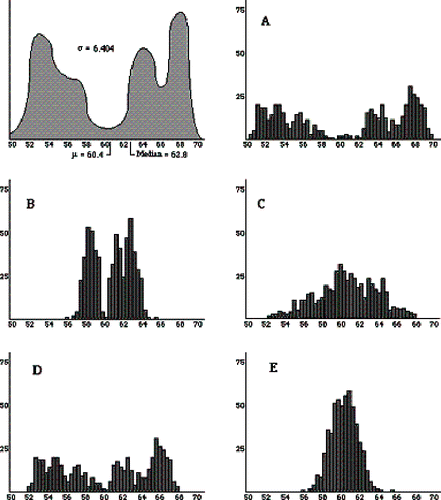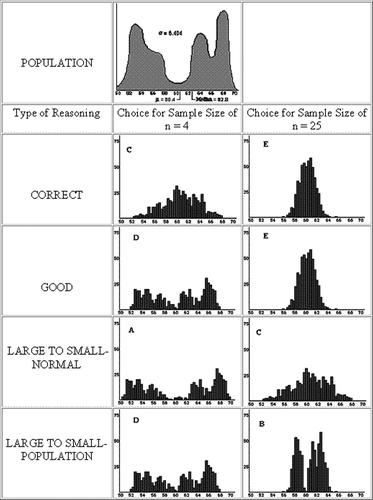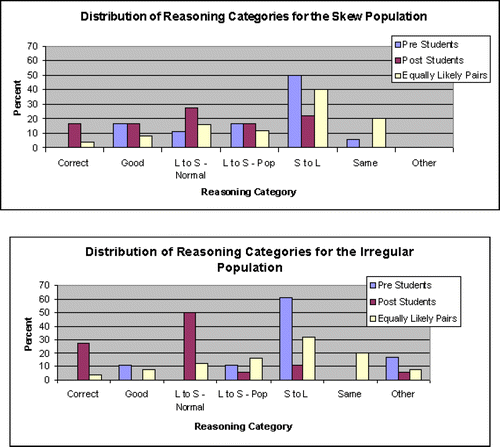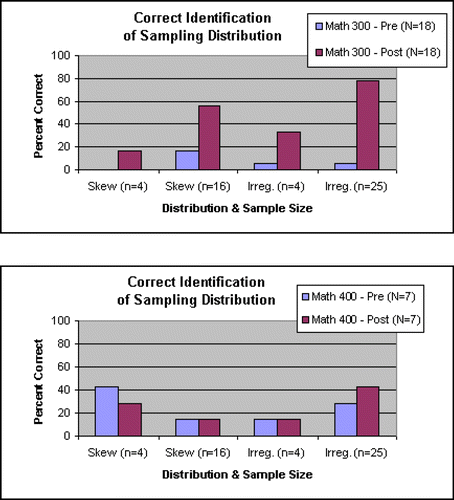Figures & data
Table 1. Overall Scores: Pretest, Posttest, and Paired Differences (N = number of students)
Figure 1. Population Distribution (Top Left) and Possible Sampling Distributions (A-E) for the Irregular Population Distribution (please see the Assessment Tool Question 5 in Appendix B).

Table 2. Correct Answers by Category, Posttest
Table 3. Math 300 Students Posttest Reasoning Pairs for the Irregular Distribution (Question 5)
Table 4. Choice of Correct Sampling Distribution and Demonstration of Consistent Graphical Reasoning for Math 300 Students.
Table 5. Math 300 Posttest Comparison of Irregular Distribution Reasoning Pairs and Consistent Graphical Reasoning for n = 4
Table 6. Application of the Empirical Rule versus Theoretical Knowledge of the Standard Deviation of the Sampling Distribution.
Figure C.1. Examples of pairs of graphs for each type of reasoning for Question 5 (Figure 9 of CitationdelMas, et. al. (2002), used with permission).

Table C.1. Question 4 Answer Pairs with Category Classification
Table C.2. Question 5 Answer Pairs with Category Classification
Figure C.2. Distribution of Math 300 Students (and Equally Likely Reasoning Pairs) into Reasoning Categories for the Skewed and Irregular Populations (Questions 4 and 5, respectively)

Table C.3. Consistent Graphical Reasoning Classification and Data for Math 300 (Pre) and Post Tests for Question 5a
Table C.4. Consistent Graphical Reasoning Classification and Data for Math 300 (Pre) and Post Tests for Question 5e
Table C.5 Qualitative Survey Results for Math 300
Table C.6 Identification of Correct Sampling Distribution for Question 4a — Skewed Distribution with Small Sample Size
Table C.7 Identification of Correct Sampling Distribution for Question 4e — Skewed Distribution with Large Sample Size
Table C.8 Identification of Correct Sampling Distribution for Question 5a—Irregular Distribution with Small Sample Size
Table C.9 Identification of Correct Sampling Distribution for Question 5e—Irregular Distribution with Large Sample Size
Table D-1: Major Mathematical Topics Covered


